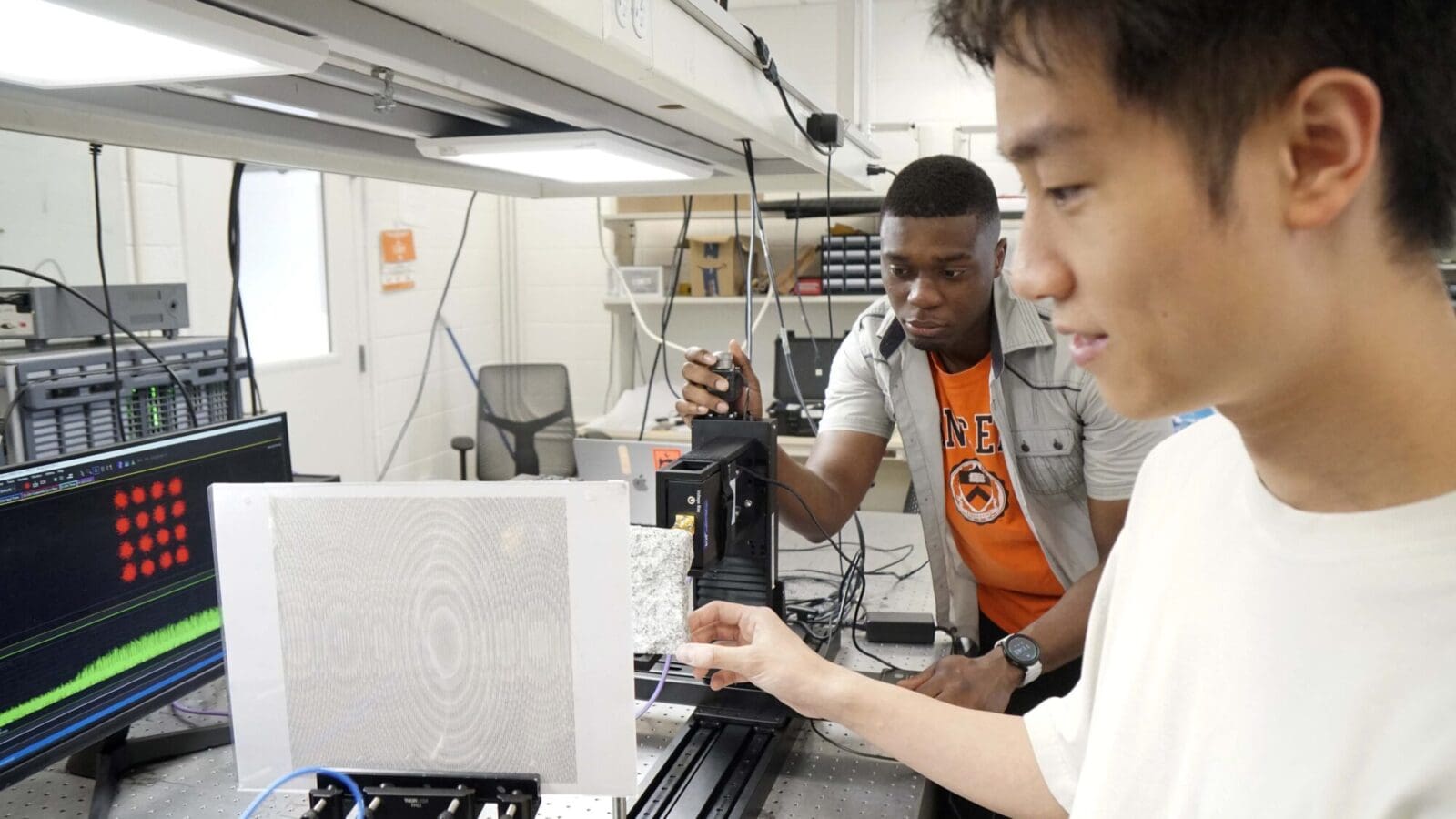High frequency radio waves can wirelessly carry the vast amount of data demanded by emerging technology like virtual reality, but as engineers push into the upper reaches of the radio spectrum, they are hitting walls. Literally.
Ultrahigh frequency bandwidths are easily blocked by objects, so users can lose transmissions walking between rooms or even passing a bookcase. Now, researchers at Princeton engineering have developed a machine-learning system that could allow ultrahigh frequency transmissions to dodge those obstacles. In an August 18 article in Nature Communications, the researchers unveiled a system that shapes transmissions to avoid obstacles coupled with a neural network that can rapidly adjust to a complex and dynamic environment.
Lead researcher Yasaman Ghasempour, an assistant professor of electrical and computer engineering at Princeton, said the work is an important step toward deploying data transmission in the sub-terahertz band, which is at the upper end of the microwave spectrum.
Transmissions in the sub-terahertz band have the potential to handle 10 times the data of current wireless systems. This kind of fast transmission would be important for uses such as virtual reality systems or fully autonomous vehicles.
“As our world becomes more connected and data-hungry, the demand for wireless bandwidth is soaring. Sub-terahertz frequencies open the door to far greater speeds and capacity,” Ghasempour said.
Sub-terahertz beams are easily blocked, but can bend with special transmitters
Ultra-high frequency signals like those in the sub-terahertz band are transmitted in defined beams, unlike lower frequency radio waves, which can span over wider areas. This makes the signals easy to block, particularly indoors and in areas with lots of moving people and objects.
Engineers have successfully tested systems using reflectors to bounce signals around obstacles. But these systems rely on reflectors that may not be available or practical in many situations.
Ghasempour’s team proposed using a special transmission technique to dodge obstacles. The researchers bent transmission beams by transmitting a signal that curves around the obstruction. In doing this, they used an idea first proposed in 1979 for a kind of radio wave called Airy beams that allow engineers to shape transmissions like a curveball. When correctly controlled, the beams can maneuver through a complex and moving field of objects.
“This is for complex indoor scenarios where you don’t have line of sight,” said Haoze Chen, a graduate student at Princeton and the paper’s lead author. “You want the link to adapt to that.”
Unlike static systems, the new system allows the transmitters to adapt to changes in real time. By adjusting the exact curvature properties on the fly, the transmitter can steer signals around new obstacles as they appear, maintaining a strong connection even in crowded, constantly changing environments.
Chen said that most work with Airy beams has focused on creating the beams and exploring their underlying physics.
“What we are doing is not only generating the beams but finding which beams work best in the situation,” he said. “People have shown that these beams can be created, but they have not shown how the beams can be optimized.”
The system learns to dodge obstacles by training like an NBA All-star
Finding the best curved beam is a difficult problem, particularly in a cluttered and shifting environment. The standard method of aiming beams —scanning a room for the best transmission path — does not work for bendable transmissions.
“For Airy beams, this is impractical,” Chen said. “There are infinite ways of curving depending on the degree of the curve and where the curve happens. There is no way a transmitter can scan through.”
To solve the problem, the researchers took a cue from human athletes. Basketball players don’t pull out a calculator every time they take a shot. They rely on past experience to learn what force and direction works for different situations. To generate that type of response, the researchers designed a neural net, a computer system that mimics the brain.
Like basketball players, neural nets require a lot of training before they can perform. But Chen said training the system by transmitting actual beams was very time-consuming. Instead, coauthor Atsutse Kludze designed a simulator that allowed the net to train virtually for different obstacles and different environments. The math behind Airy beams is difficult, and Kludze, a doctoral student in Ghasempour’s lab, had to create a system that applied the underlying physics to almost any scenario.
Neural net calibrates curves with perfect precision
Throwing a lot of data at the neural net is not effective. Instead, the researchers use principles from physics to create and train the neural net. Once the system was trained, the neural net was able to adapt incredibly quickly.
The researchers said they tested their scheme with experiments, which were focused on understanding the technology and developing ways to control the transmissions.
“This work tackles a long-standing problem that has prevented the adoption of such high frequencies in dynamic wireless communications to date,” Ghasempour said. “With further advances, we envision transmitters that can intelligently navigate even the most complex environments, bringing ultra-fast, reliable wireless connectivity to applications that today seem out of reach — from immersive virtual reality to fully autonomous transportation.”
The article, A Physics-Informed Airy Beam Learning Framework for Blockage Avoidance in sub-Terahertz Wireless Network, was published August 18 in the journal Nature Communications. The research was supported in part by the National Science Foundation, the Air Force Office of Scientific Research and the Qualcomm Innovation Fellowship.
